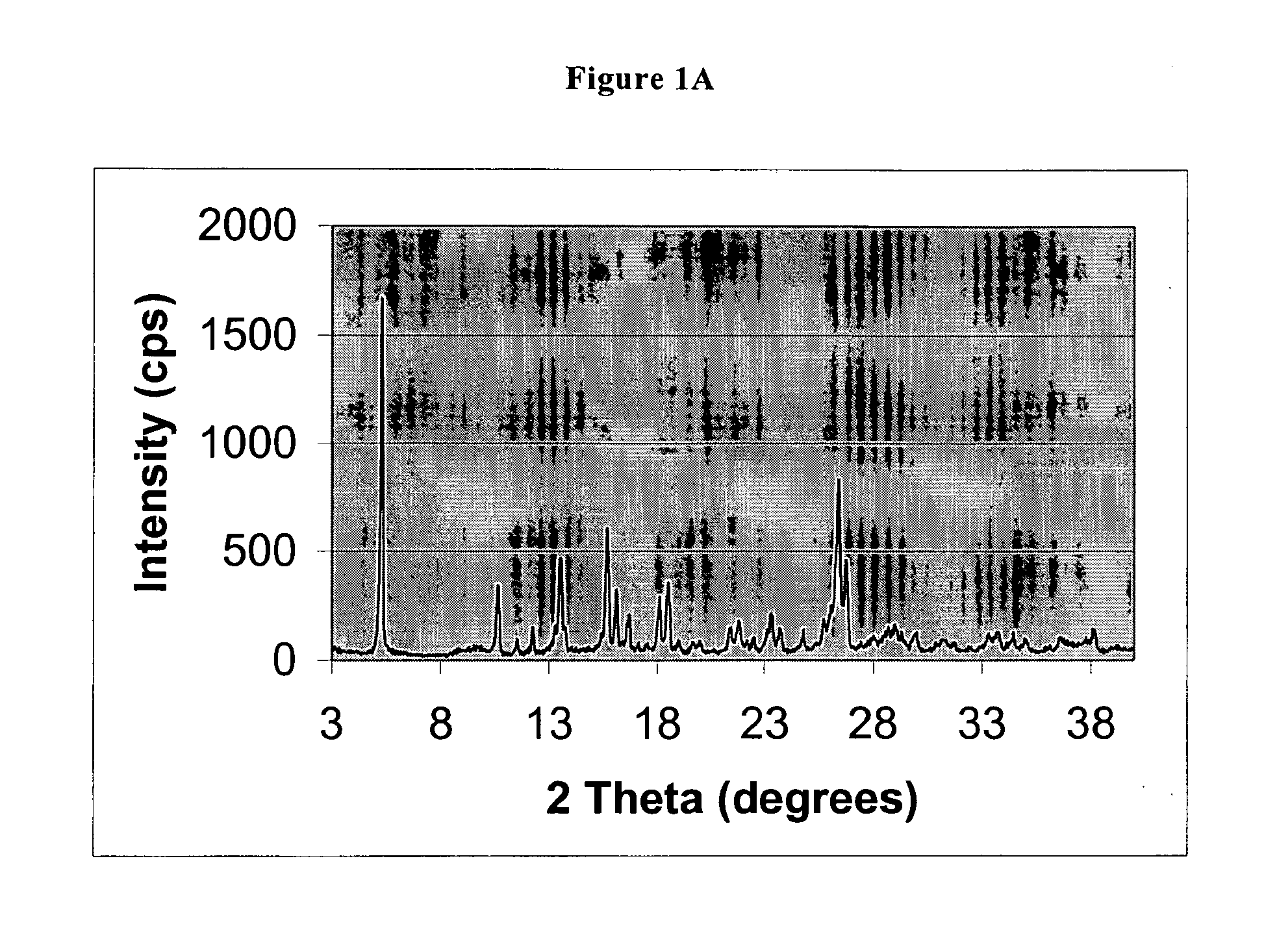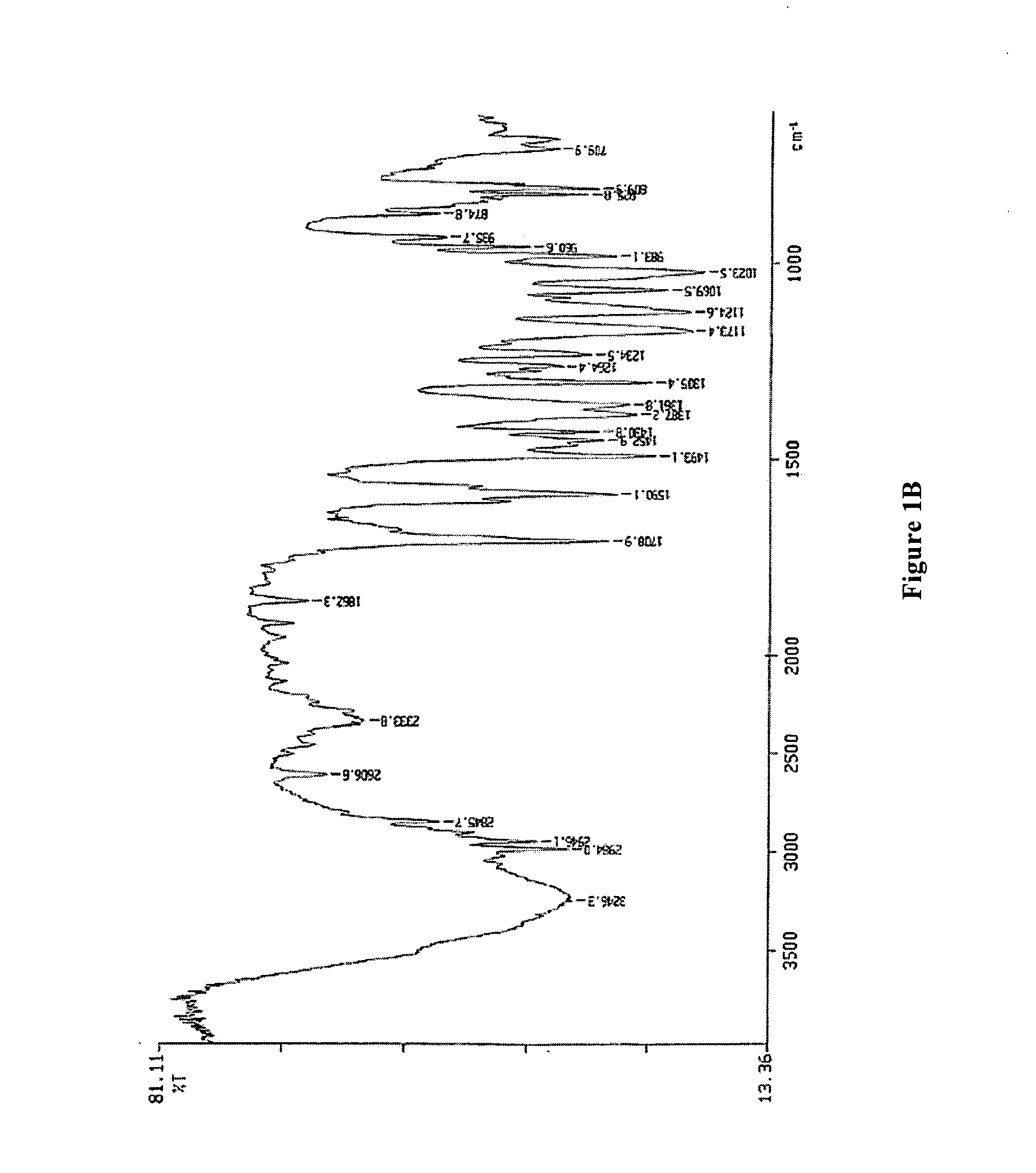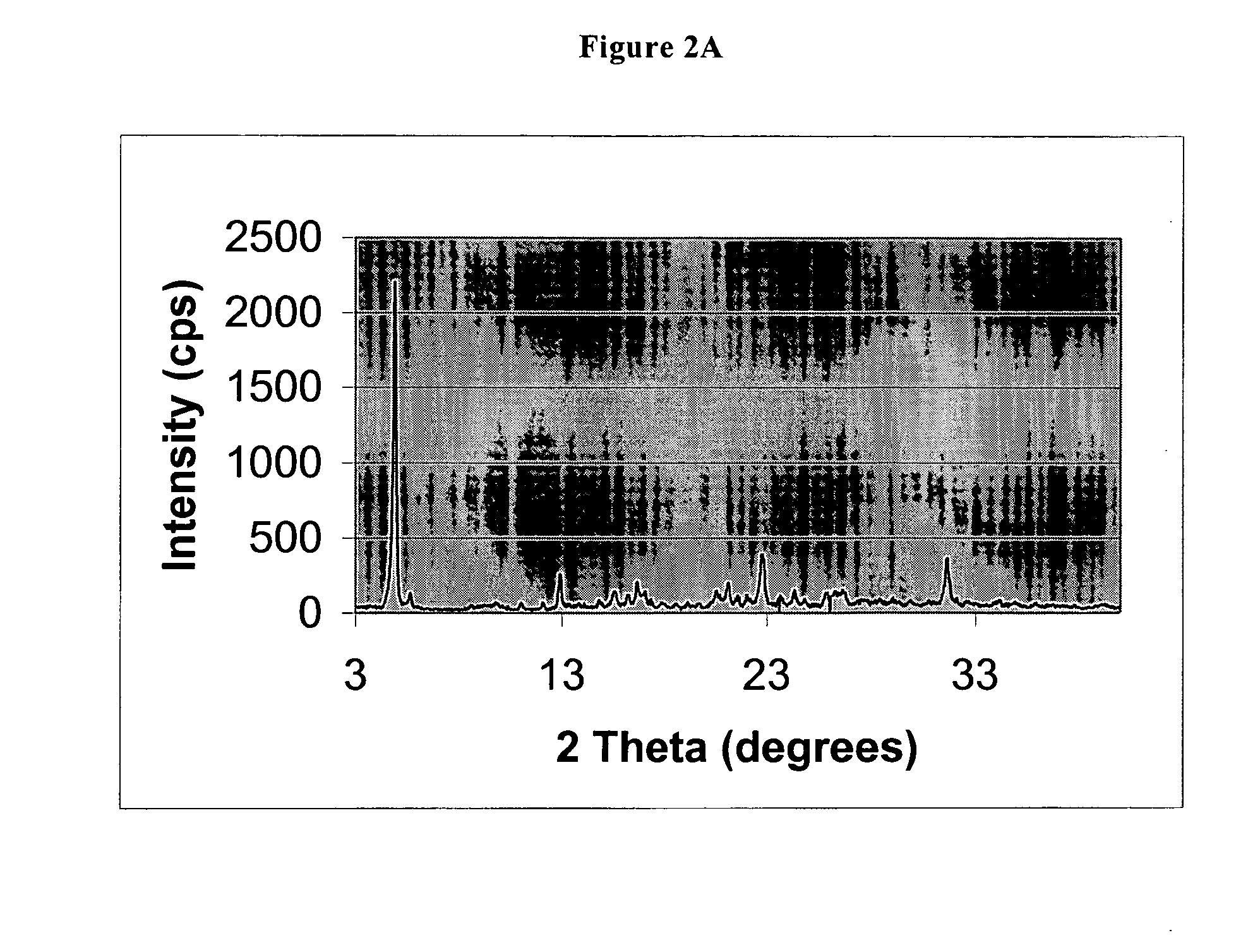Polymorphs of pantoprazole sodium salt and process for the preparation thereof
a technology polymorphs, which is applied in the field of new crystalline forms of pantoprazole sodium salt, can solve the problem of providing no useful information on the characterization of said solva
- Summary
- Abstract
- Description
- Claims
- Application Information
AI Technical Summary
Problems solved by technology
Method used
Image
Examples
example 1
Preparation of Pantoprazole Sodium Salt Approximately Monohydrate Monosolvate with Methyl Isobutyl Ketone
[0045] 5 g of 5-(difluoromethoxy)-2-[[(3,4-dimethoxy-2-pyridinyl)methyl]sulfinyl]-1H-benzimidazole sodium salt monohydrate (11.8 mmoles) are dissolved in 15 ml of purified water, under stirring. 20 ml of methyl isobutyl ketone are slowly dropped into resulting solution, stirring vigorously the mixture at room temperature. One hour after completion of the addition, a precipitate forms at the interphase which is recovered by filtration with suction, washed on the filter with methyl isobutyl ketone and dried under vacuum at a temperature of 50° C. to constant weight. 4.3 g of product are obtained (molar yield: 69.6%).
[0046] XRPD analysis shows that the solid is a substantially crystalline product, having the following characteristics: crystallinity as shown by X-ray powder diffraction pattern of FIG. 2A, characterized by a multiplicity of diffraction peaks, the more intense being ...
example 2
Preparation of Pantoprazole Sodium Salt Approximately Monohydrate Monosolvate with Methyl Ethyl Ketone
[0047] 55 kg of pantoprazole sodium salt sesquihydrate (127.3 moles) are dissolved at about 75° C. in 265 kg of methyl ethyl ketone. The resulting solution is slowly added with water (4.5 kg). The resulting mixture is cooled to 42-45° C. and kept under these conditions until a solid product forms. The mixture is then cooled to 15-20° C. and kept under these conditions for at least an hour. The formed solid is filtered and washed with methyl ethyl ketone, then dried under vacuum at 40° C. to constant weight. 53.5 kg product are obtained (molar yield 84.9%).
[0048] XRPD analysis shows that the solid is a substantially crystalline product, having the following characteristics: crystallinity as shown by X-ray powder diffraction pattern of FIG. 1A, characterized by a multiplicity of diffraction peaks, the more intense being at 5.31, 13.53, 15.66, 16.08, 18.51, 26.43, 26.76 in 2θ as show...
example 3
Preparation of Pantoprazole Sodium Salt Approximately Monohydrate Monosolvate with Acetone
[0049] 31.2 g of pantoprazol in the acid form (81.5 mmoles) are suspended in 210 ml of acetone. Then 6.5 g of a 50% w / w NaOH aqueous solution (81.5 mmoles) are slowly added. The resulting mixture is refluxed to complete dissolution of the solid, then cooled to 45° C. A precipitate forms, which is cooled to 15° C. and kept under these conditions for an hour. The solid is filtered, washed with some acetone and dried at about 30° C. under vacuum to constant weight. 31.5 g of product are obtained (molar yield 80.4%).
[0050] XRPD analysis shows that the solid is a substantially crystalline product, having the following characteristics: crystallinity as shown by X-ray powder diffraction pattern characterized by a multiplicity of diffraction peaks, the more intense being at 5.52, 16.32, 26.04 in 2θ as shown in Table 4. The solid has 3.8% w / w water content (measured by Karl Fischer) and 12% w / w aceton...
PUM
| Property | Measurement | Unit |
|---|---|---|
| θ/ | aaaaa | aaaaa |
| boiling temperature | aaaaa | aaaaa |
| temperature | aaaaa | aaaaa |
Abstract
Description
Claims
Application Information
 Login to View More
Login to View More - R&D
- Intellectual Property
- Life Sciences
- Materials
- Tech Scout
- Unparalleled Data Quality
- Higher Quality Content
- 60% Fewer Hallucinations
Browse by: Latest US Patents, China's latest patents, Technical Efficacy Thesaurus, Application Domain, Technology Topic, Popular Technical Reports.
© 2025 PatSnap. All rights reserved.Legal|Privacy policy|Modern Slavery Act Transparency Statement|Sitemap|About US| Contact US: help@patsnap.com



